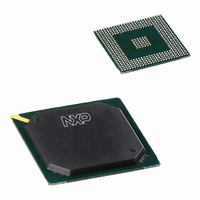PNX1502E,557 NXP Semiconductors, PNX1502E,557 Datasheet - Page 278

PNX1502E,557
Manufacturer Part Number
PNX1502E,557
Description
IC MEDIA PROC 300MHZ 456-BGA
Manufacturer
NXP Semiconductors
Specifications of PNX1502E,557
Applications
Multimedia
Core Processor
TriMedia
Controller Series
Nexperia
Interface
I²C, 2-Wire Serial
Number Of I /o
61
Voltage - Supply
1.23 V ~ 1.37 V
Operating Temperature
0°C ~ 85°C
Mounting Type
Surface Mount
Package / Case
456-BGA
Lead Free Status / RoHS Status
Lead free / RoHS Compliant
Program Memory Type
-
Ram Size
-
Lead Free Status / Rohs Status
Not Compliant
Other names
935274744557
PNX1502E
PNX1502E
PNX1502E
PNX1502E
Available stocks
Company
Part Number
Manufacturer
Quantity
Price
Company:
Part Number:
PNX1502E,557
Manufacturer:
NXP Semiconductors
Quantity:
10 000
- Current page: 278 of 828
- Download datasheet (8Mb)
Philips Semiconductors
Volume 1 of 1
PNX15XX_SER_3
Product data sheet
Figure 5:
Up to 4-bit Signal Sampling
31302928272625242322212019181716151413121110 9 8 7 6 5 4 3 2 1 0
31
31
31
IO_SEL_3 sample IO_SEL_2 sample IO_SEL_1 sample IO_SEL_0 sample
IO_SEL_0 sample
IO_SEL_1 sample IO_SEL_0 sample
15
2.3.2 The Signal Pattern Generation Mode
7
14
31
31
31
13
buffer. The numbers of signals to sample together per FIFO queue is programmed by
setting the GPIO_EV[3:0].EN_IO_SEL fields. The signal selection for sampling is
programmed in the IO_SEL[3:0] registers.
The signal pattern generation mode is the dual of the signal sampling mode. The
software builds in memory DMA buffers that are fetched by the GPIO module. The
data is then transferred to a selected group of GPIO pins. Similarly to the sampling
mode the pattern generation mode offers two different ways to output signals:
Pattern generation can start once the software has filled the DMA buffers.
GPIO MMIO Description for Pattern Generation FIFO queues
The FIFO queues are controlled by the GPIO_EV[3:0] MMIO registers. The status of
the sampling and the interrupt control MMIO registers are INT_STATUS[3:0],
INT_ENABLE[3:0] and INT_CLEAR[3:0]. INT_SET[3:0] is only meant for software
debug (used to trigger the hardware interrupt but using software). In the following text
a ‘x’ may be used to refer to one of the 4 MMIO registers, e.g. GPIO_EVx or one of
the two flags, like BUFx_RDY for BUF2_RDY or BUF2_RDY.
Upon reset, transmission is disabled (GPIO_EVx.FIFO_MODE and
GPIO_EVx.EVENT_MODE is reset to 00), and the DMA buffer 1 is the active buffer.
The system software initiates transmission by providing two DMA buffers containing
6
•
•
12
Timestamp mode: The software creates DMA buffers that contain 32-bit values
as defined in
used to drive the GPIO pins with the correct polarity and to emit the sample at the
correct time, i.e. when the software computed timestamped matches the internal
timestamp counter.
Pattern mode: The GPIO module outputs the DMA buffer content on a select
group of GPIO pins. In this mode up to 4 signals per FIFO can be grouped for
pattern generation.
11
5
10
30
30
9
4
Section
Rev. 3 — 17 March 2006
8
7
3
2.2.2. The direction bit and the timestamp information is
6
29
5
2
Chapter 8: General Purpose Input Output Pins
4
3
1
2
28
1
0
0
0
0
0
© Koninklijke Philips Electronics N.V. 2006. All rights reserved.
PNX15xx Series
1-bit shifted in
=> 32 samples
2-bit shifted in
=> 16 samples
4-bits shifted in
=> 8 samples
8-11
Related parts for PNX1502E,557
Image
Part Number
Description
Manufacturer
Datasheet
Request
R
Part Number:
Description:
Digital Signal Processors & Controllers (DSP, DSC) MEDIA PROCESSOR PNX15XX/300MHZ
Manufacturer:
NXP Semiconductors

Part Number:
Description:
IC MEDIA PROC 300MHZ 456-BGA
Manufacturer:
NXP Semiconductors
Datasheet:
Part Number:
Description:
NXP Semiconductors designed the LPC2420/2460 microcontroller around a 16-bit/32-bitARM7TDMI-S CPU core with real-time debug interfaces that include both JTAG andembedded trace
Manufacturer:
NXP Semiconductors
Datasheet:

Part Number:
Description:
NXP Semiconductors designed the LPC2458 microcontroller around a 16-bit/32-bitARM7TDMI-S CPU core with real-time debug interfaces that include both JTAG andembedded trace
Manufacturer:
NXP Semiconductors
Datasheet:
Part Number:
Description:
NXP Semiconductors designed the LPC2468 microcontroller around a 16-bit/32-bitARM7TDMI-S CPU core with real-time debug interfaces that include both JTAG andembedded trace
Manufacturer:
NXP Semiconductors
Datasheet:
Part Number:
Description:
NXP Semiconductors designed the LPC2470 microcontroller, powered by theARM7TDMI-S core, to be a highly integrated microcontroller for a wide range ofapplications that require advanced communications and high quality graphic displays
Manufacturer:
NXP Semiconductors
Datasheet:
Part Number:
Description:
NXP Semiconductors designed the LPC2478 microcontroller, powered by theARM7TDMI-S core, to be a highly integrated microcontroller for a wide range ofapplications that require advanced communications and high quality graphic displays
Manufacturer:
NXP Semiconductors
Datasheet:
Part Number:
Description:
The Philips Semiconductors XA (eXtended Architecture) family of 16-bit single-chip microcontrollers is powerful enough to easily handle the requirements of high performance embedded applications, yet inexpensive enough to compete in the market for hi
Manufacturer:
NXP Semiconductors
Datasheet:

Part Number:
Description:
The Philips Semiconductors XA (eXtended Architecture) family of 16-bit single-chip microcontrollers is powerful enough to easily handle the requirements of high performance embedded applications, yet inexpensive enough to compete in the market for hi
Manufacturer:
NXP Semiconductors
Datasheet:
Part Number:
Description:
The XA-S3 device is a member of Philips Semiconductors? XA(eXtended Architecture) family of high performance 16-bitsingle-chip microcontrollers
Manufacturer:
NXP Semiconductors
Datasheet:

Part Number:
Description:
The NXP BlueStreak LH75401/LH75411 family consists of two low-cost 16/32-bit System-on-Chip (SoC) devices
Manufacturer:
NXP Semiconductors
Datasheet:

Part Number:
Description:
The NXP LPC3130/3131 combine an 180 MHz ARM926EJ-S CPU core, high-speed USB2
Manufacturer:
NXP Semiconductors
Datasheet:

Part Number:
Description:
The NXP LPC3141 combine a 270 MHz ARM926EJ-S CPU core, High-speed USB 2
Manufacturer:
NXP Semiconductors

Part Number:
Description:
The NXP LPC3143 combine a 270 MHz ARM926EJ-S CPU core, High-speed USB 2
Manufacturer:
NXP Semiconductors

Part Number:
Description:
The NXP LPC3152 combines an 180 MHz ARM926EJ-S CPU core, High-speed USB 2
Manufacturer:
NXP Semiconductors











